New Configuration and Novel Reclosing Procedure of Distribution System for Utilization of BESS as UPS in Smart Grid
Abstract
:1. Introduction
2. Conventional Configuration and Reclosing Procedure of Distribution System
3. New Configuration of the Distribution System and a Novel Reclosing Procedure Considering a BESS
3.1. New Configuration of Distribution System
- (1)
- Replacement of the recloser with a CB and a protective relay.The recloser is a device that interrupts the circuit using only the increase of the fault current and performs the reclosing operation after the fixed dead time. However, in order to perform the reclosing procedure, considering the BESS proposed in this paper, it is necessary to simultaneously open/close the CB at the load side. Additionally, it is possible to judge whether or not the fault is cleared by using the small load current. These functions are not possible in the conventional recloser. Therefore, this paper proposes to replace this with the CB and a protection relay.
- (2)
- Installation of CBs at both sides of the distribution line.The conventional distribution system only has the recloser at the main source side. Assuming that the BESS supplies the steady-state power to the load after opening of the recloser due to a fault in conventional configuration. Load 1 will be supplied by the 22.9 kV source and load 2 will be supplied by the BESS when a fault occurs. The current from the BESS in the faulted phase among three phases flows to the fault point and no current flows to load 2. If a three phase to ground fault occurs, as shown in Figure 4, all currents flow to the fault point. If a single-line or double-line to ground fault occurs, as shown in Figure 5, the current of the faulted phase flows to the fault point and the current of the healthy phase flows to load 2. If three phase loads exist, they cannot receive the steady state power from the BESS during the fault. This is a disadvantage of the conventional configuration. Therefore, to block the current flow to the fault point, this paper proposes the new configuration of the distribution system where the CB at the load side (CB2 in Figure 3) is additionally installed. CBs are typically more expensive compared to reclosers. However, on the other hand, the economic effects, such as a reduction of the compensation cost by the reduction of outage times will also appear. Since the purpose of this study is to improve the operational ability in distribution systems with a large-capacity BESS, the economic analysis is not considered.
- (3)
- Requirement of a communication method.In the conventional reclosing scheme, the protection relay transmits a trip command to only one breaker. However, in the proposed method, CB1 and CB2 must be tripped at the same time. In addition, the voltage and current at the main source side and the voltage and current at the load side must be simultaneously inputted to the protective relay. Therefore, the communication method is required to receive two inputs at the same time and transmit the open/close signals to CB1 and CB2 as an output.
3.2. Novel Reclosing Procedure Considering the BESS
4. Simulation
4.1. System Model
4.2. Simulation Conditions
4.3. Simulation Results and Discussion
- (1):
- Fault occurrence
- (2):
- Open of CB1 and CB2 at the same time
- (3):
- Fault clearance
- (4):
- First reclosing attempt of CB2
- (5):
- Reclosing of CB1 when the first reclosing of CB2 is successful, i.e., the fault is cleared
- (6):
- Re-open of CB1 when the first reclosing of CB2 is not successful, i.e., the fault is not cleared
- (7):
- Second reclosing attempt of CB2
- (8):
- Reclosing of CB1 when the second reclosing of CB2 is successful, i.e., the fault is cleared
- (9):
- Re-open of CB1 when the second reclosing of CB2 is not successful, i.e., the fault is not cleared
4.3.1. Case 1
4.3.2. Case 2
4.3.3. Case 3
5. Conclusions
Author Contributions
Conflicts of Interest
References
- Shariatkhah, M.-H.; Haghifam, M.-R.; Chicco, G.; Mohsen, P.-M. Modelling the operation strategies of storages and hydro resources in adequacy analysis of power systems in presence of wind farms. IET Renew. Power Gener. 2016, 10, 1059–1068. [Google Scholar] [CrossRef]
- Brekken, T.K.A.; Yokochi, A.; von Jouanne, A.; Yen, Z.Z.; Hapke, H.M.; Halamay, D.A. Optimal Energy Storage Sizing and Control for Wind Power Applications. IEEE Trans. Sustain. Energy 2011, 2, 69–77. [Google Scholar] [CrossRef]
- Li, X.; Hui, D.; Lai, X. Battery Energy Storage Station (BESS)-Based Smoothing Control of Photovoltaic (PV) and Wind Power Generation Fluctuations. IEEE Trans. Sustain. Energy 2013, 4, 464–473. [Google Scholar] [CrossRef]
- Ju, L.; Tan, Z.; Yuan, J.; Tan, Q.; Li, H.; Dong, F. A bi-level stochastic scheduling optimization model for a virtual power plant connected to a wind-photovoltaic-energy storage system considering the uncertainty and demand response. Appl. Energy 2016, 171, 184–199. [Google Scholar] [CrossRef]
- Reihani, E.; Motalleb, M.; Ghorbani, R.; Saoud, L.S. Load peak shaving and power smoothing of a distribution grid with high renewable energy penetration. Renew. Energy 2016, 86, 1372–1379. [Google Scholar] [CrossRef]
- Diao, W.; Jiang, J.; Liang, H.; Zhang, C.; Jiang, Y.; Wang, L.; Mu, B. Flexible Grouping for Enhanced Energy Utilization Efficiency in Battery Energy Storage System. Energies 2016, 9, 498. [Google Scholar] [CrossRef]
- Atia, R.; Yamada, N. Distributed Renewable Generation and Storage System Sizing Based on Smart Dispatch of Microgrids. Energies 2016, 9, 176. [Google Scholar] [CrossRef]
- Zhou, H.; Bhattacharya, T.; Tran, D.; Siew, T.S.T.; Khambadkone, A.M. Composite Energy Storage System Involving Battery and Ultracapacitor with Dynamic Energy Management in Microgrid Applications. IEEE Trans. Power Electron. 2011, 26, 923–930. [Google Scholar] [CrossRef]
- Reihani, E.; Sepasi, S.; Roose, L.R.; Matsuura, M. Energy management at the distribution grid using a Battery Energy Storage System (BESS). Int. J. Electr. Power Energy Syst. 2016, 77, 337–344. [Google Scholar] [CrossRef]
- Zhou, N.; Liu, N.; Zhang, J.; Lei, J. Multi-Objective Optimal Sizing for Battery Storage PV-Based Microgrid with Demand Response. Energies 2016, 9, 591. [Google Scholar] [CrossRef]
- Wang, D.; Ge, S.; Jia, H.; Wang, C.; Zhou, Y.; Lu, N.; Kong, X. A demand response and battery storage coordination algorithm for providing microgrid tie-line smoothing services. IEEE Trans. Sustain. Energy 2014, 5, 476–486. [Google Scholar] [CrossRef]
- Liu, J.; Wen, J.; Yao, W.; Long, Y. Solution to short-term frequency response of wind farms by using energy storage systems. IET Renew. Power Gener. 2016, 10, 669–678. [Google Scholar] [CrossRef]
- Yang, J.-S.; Choi, J.-Y.; An, G.-H.; Choi, Y.-J.; Kim, M.-H.; Won, D.-J. Optimal Scheduling and Real-Time State-of-Charge Management of Energy Storage System for Frequency Regulation. Energies 2016, 9, 1010. [Google Scholar] [CrossRef]
- Lucas, A.; Chondrogiannis, S. Smart grid energy storage controller for frequency regulation and peak shaving, using a vanadium redox flow battery. Int. J. Electr. Power Energy Syst. 2016, 80, 26–36. [Google Scholar] [CrossRef]
- Serban, I.; Marinescu, C. Control Strategy of Three-Phase Battery Energy Storage Systems for Frequency Support in Microgrids and with Uninterrupted Supply of Local Loads. IEEE Trans. Power Electron. 2014, 29, 5010–5020. [Google Scholar] [CrossRef]
- Luo, X.; Wang, J.; Dooner, M.; Clarke, J. Overview of current development in electrical energy storage technologies and the application potential in power system operation. Appl. Energy 2015, 137, 511–536. [Google Scholar] [CrossRef]
- Seo, H.-C. New Reclosing Technique in Distribution System with Battery Energy Storage System. J. Korean Inst. Illuminating Electr. Install. Eng. 2016, 30, 21–27. [Google Scholar] [CrossRef]
- Seo, H.-C. New adaptive reclosing technique using second-order difference of THD in distribution system with BESS used as uninterruptible power supply. Int. J. Electr. Power Energy Syst. 2017, 84, 13–24. [Google Scholar] [CrossRef]
- Seo, H.-C.; Ko, Y.-T.; Rhee, S.-B.; Kim, C.-H.; Aggarwal, R.K. A Novel Reclosing Algorithm considering the Recovery Time of a Superconducting Fault Current Limiter in Distribution System with Distributed Generation. In Proceedings of the Institution of Engineering and Technology Conference on Developments in Power System Protection, Manchester, UK, 29 March–1 April 2010. [Google Scholar]
- Stroe, D.I.; Knap, V.; Swierczynski, M.; Stroe, A.I.; Teodorescu, R. Operation of a Grid-Connected Lithium-Ion Battery Energy Storage System for Primary Frequency Regulation: A Battery Lifetime Perspective. IEEE Trans. Ind. Appl. 2017, 53, 430–438. [Google Scholar] [CrossRef]
- Korea Electric Power Corporation. Technical Standard for Interconnecting Distributed Generation with Distribution System; Korea Electric Power Corporation: Naju, Korea, 2015. [Google Scholar]
- Kim, J.-H.; Lee, S.-J.; Kim, E.-S.; Kim, S.-K.; Kim, C.-H.; Prikler, L. Modeling of Battery for EV using EMTP/ATPDraw. J. Electr. Eng. Technol. 2014, 9, 98–105. [Google Scholar] [CrossRef]
- Kim, C.-H.; Lee, M.-H.; Aggarwal, R.K.; Johns, A.T. Educational Use of EMTP MODELS for the Study of a Distance Relaying Algorithm for Protecting Transmission Lines. IEEE Trans. Power Syst. 2000, 15, 9–15. [Google Scholar]


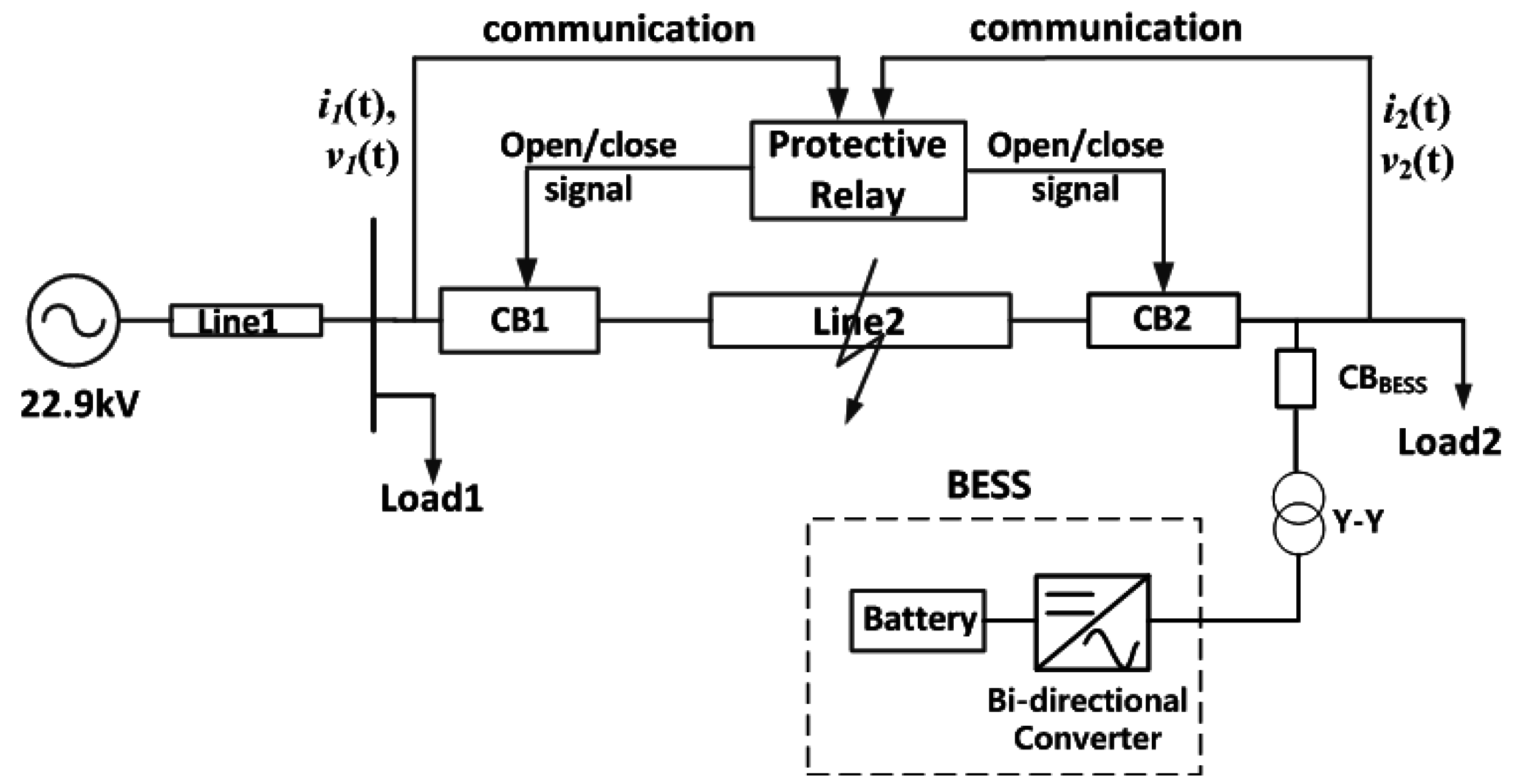

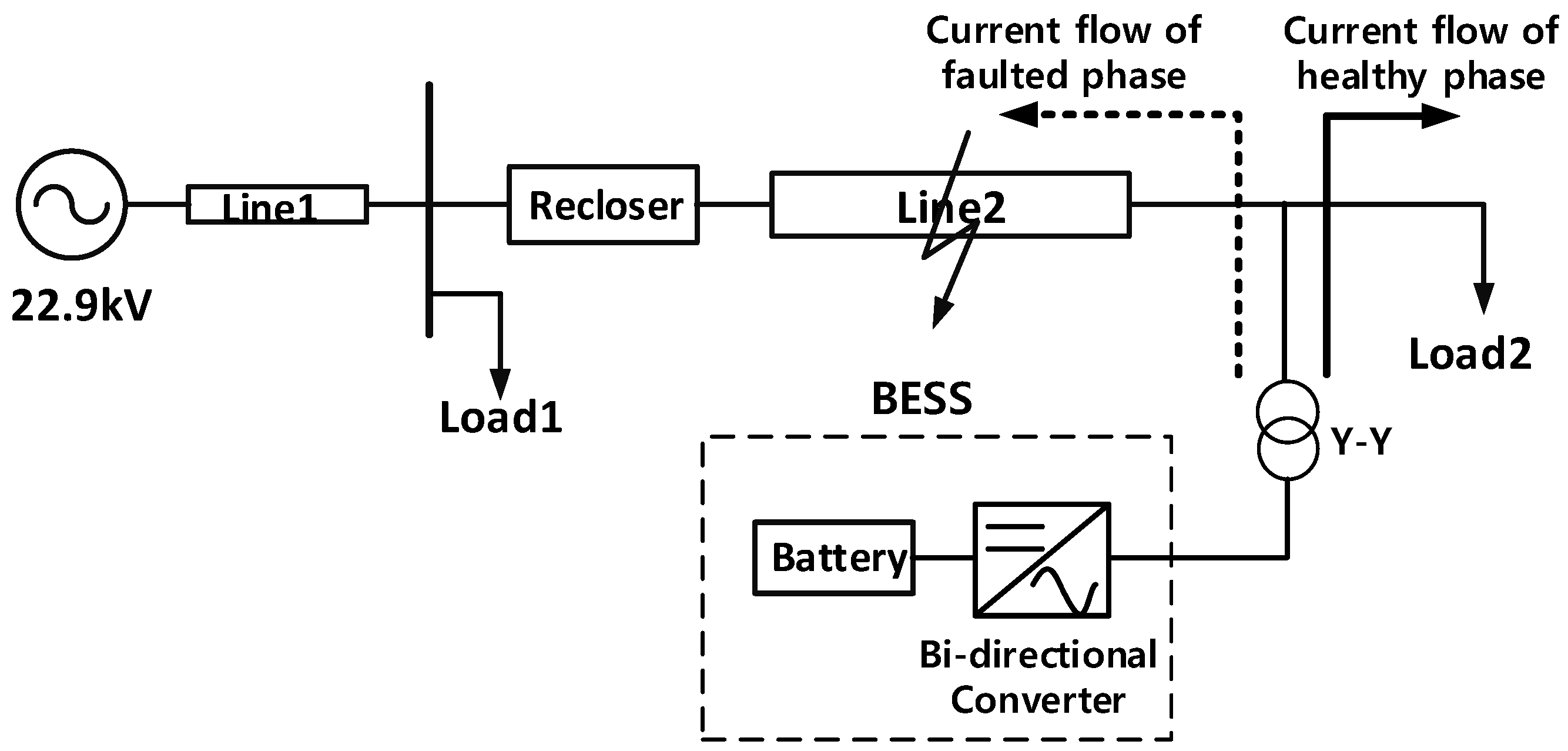
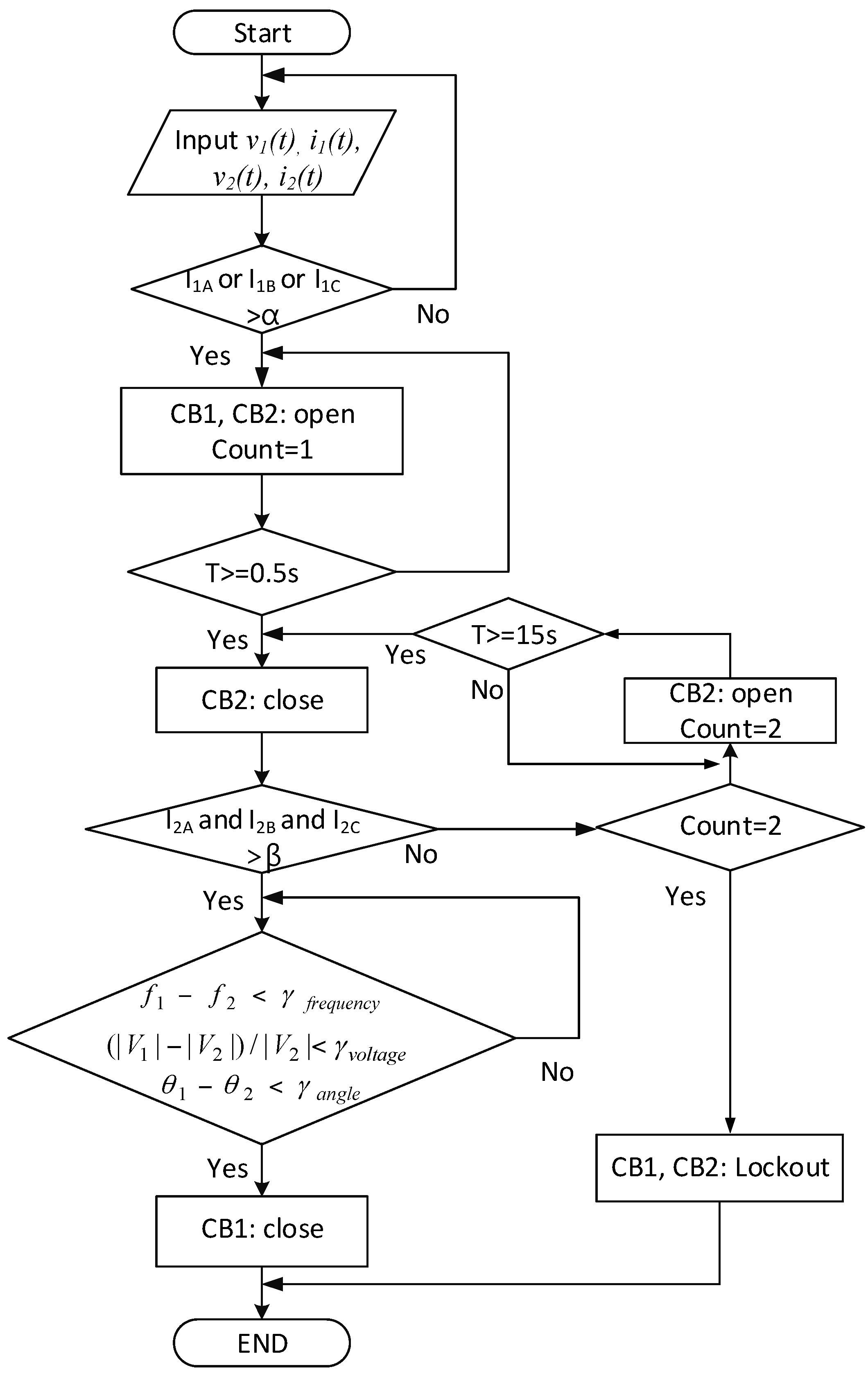
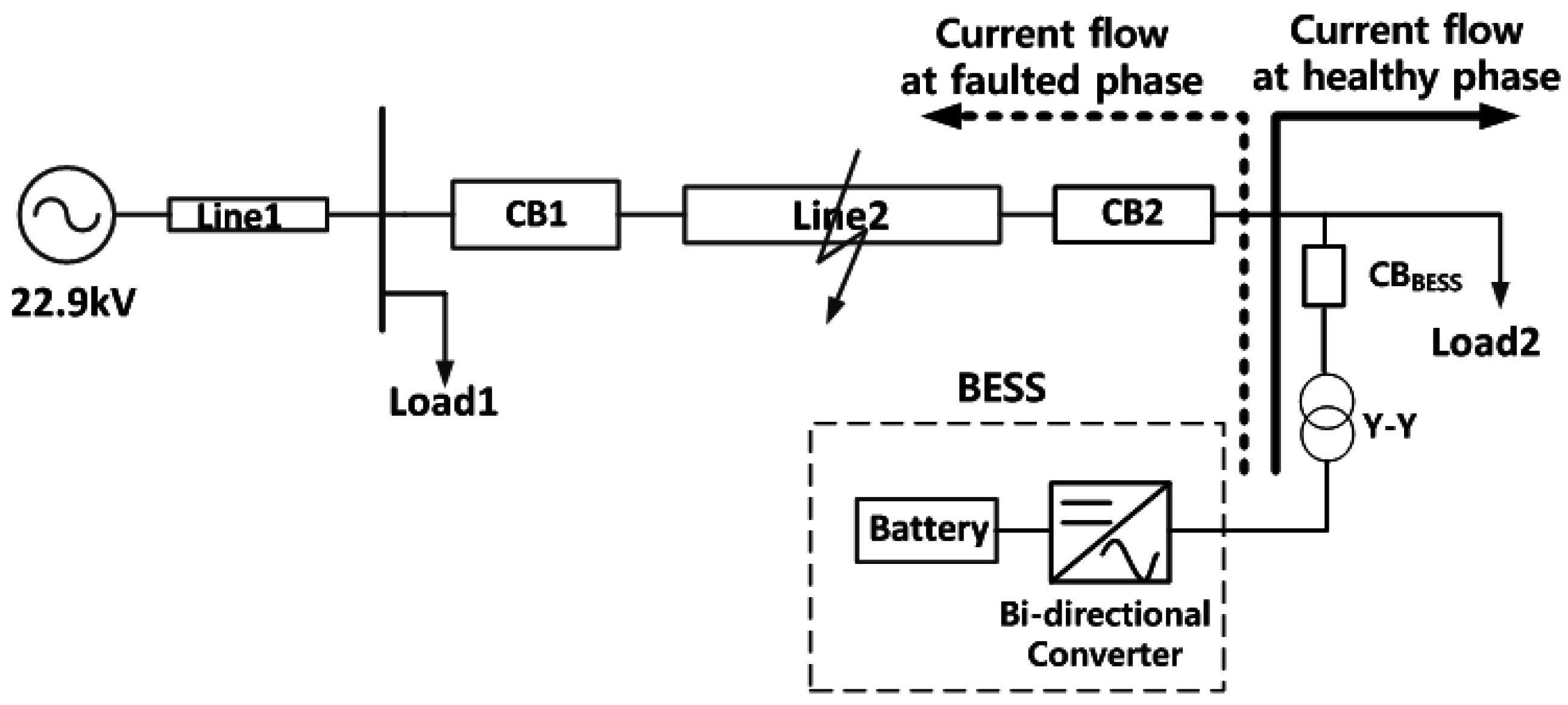
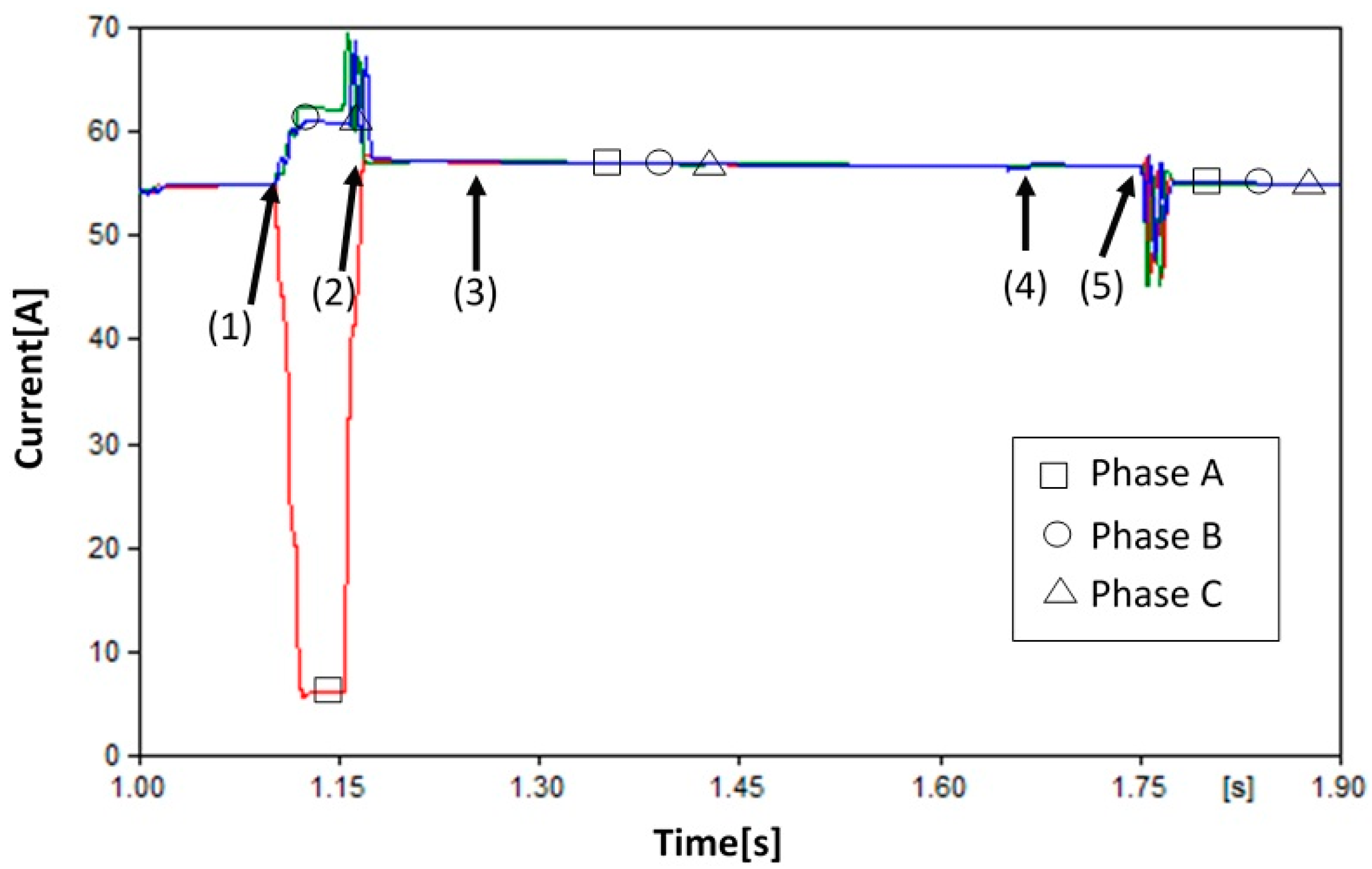
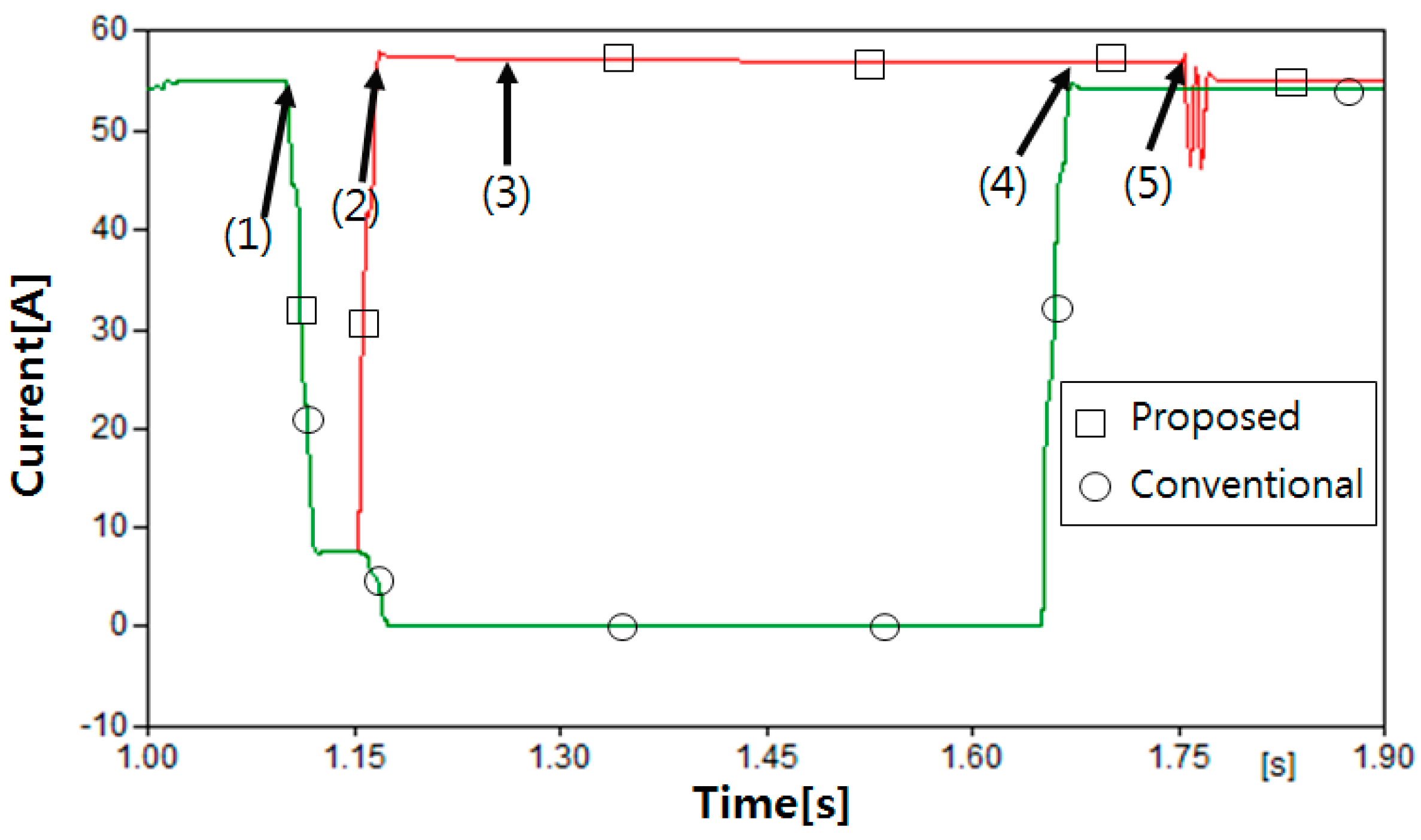
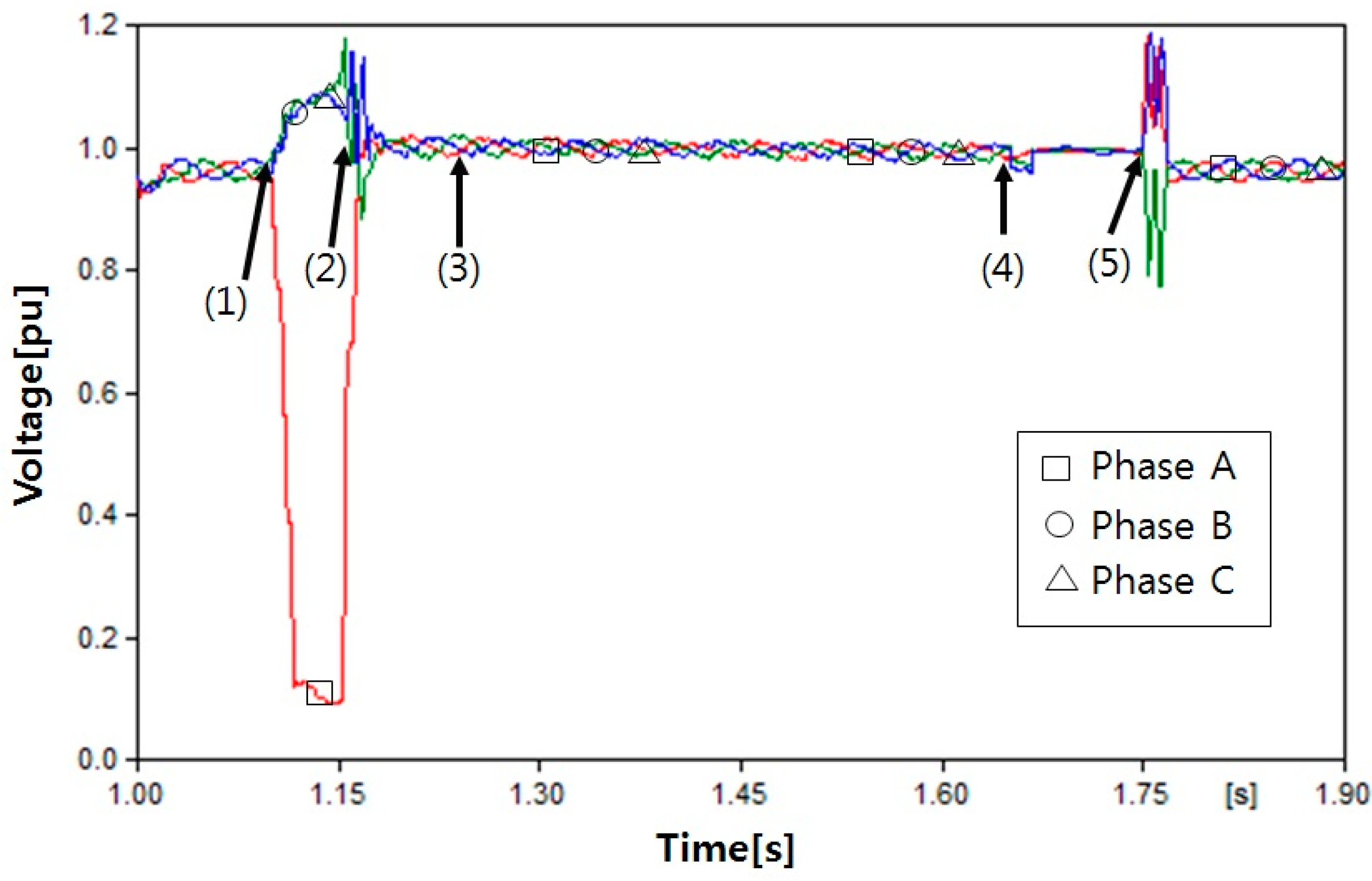

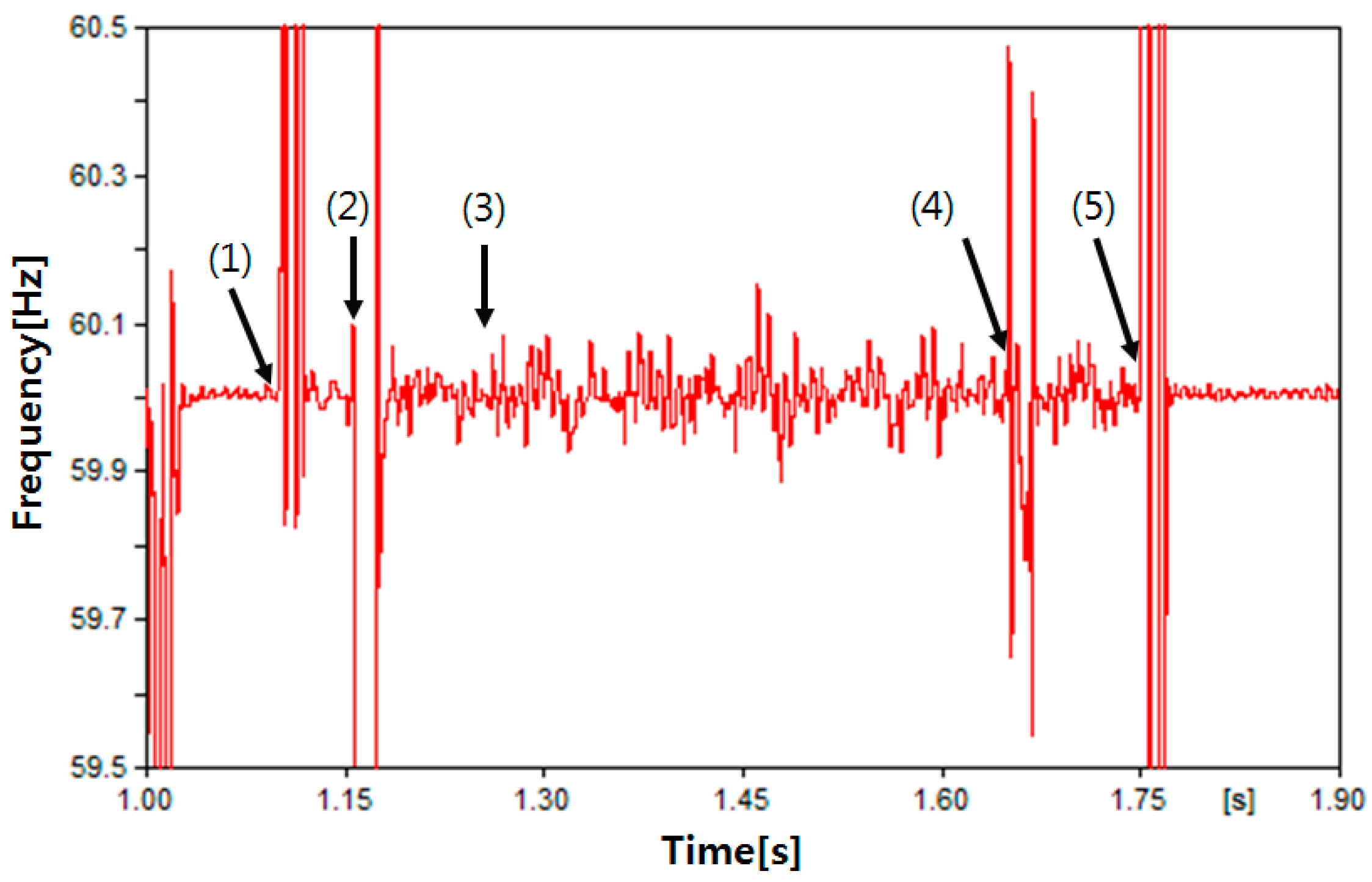

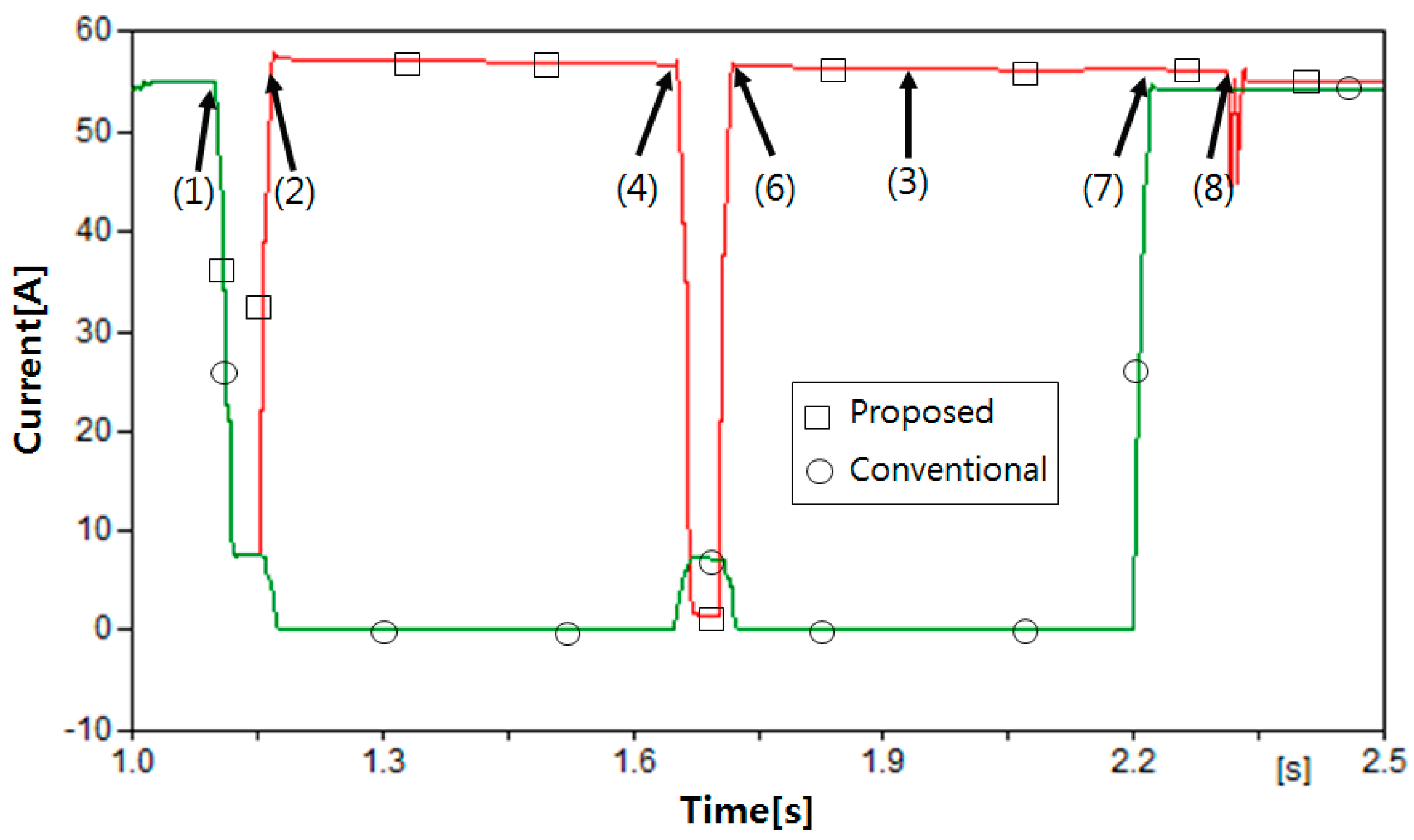

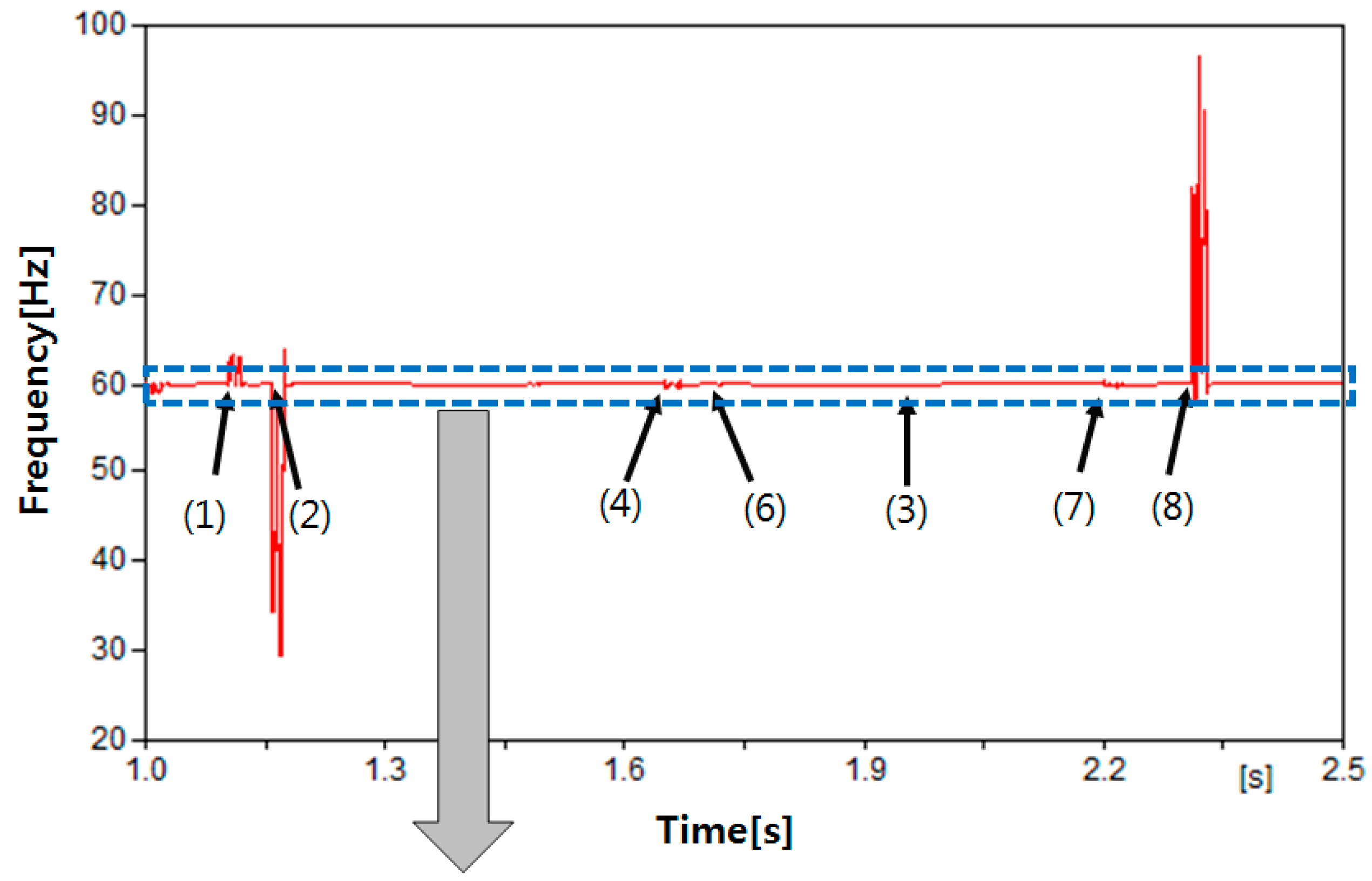

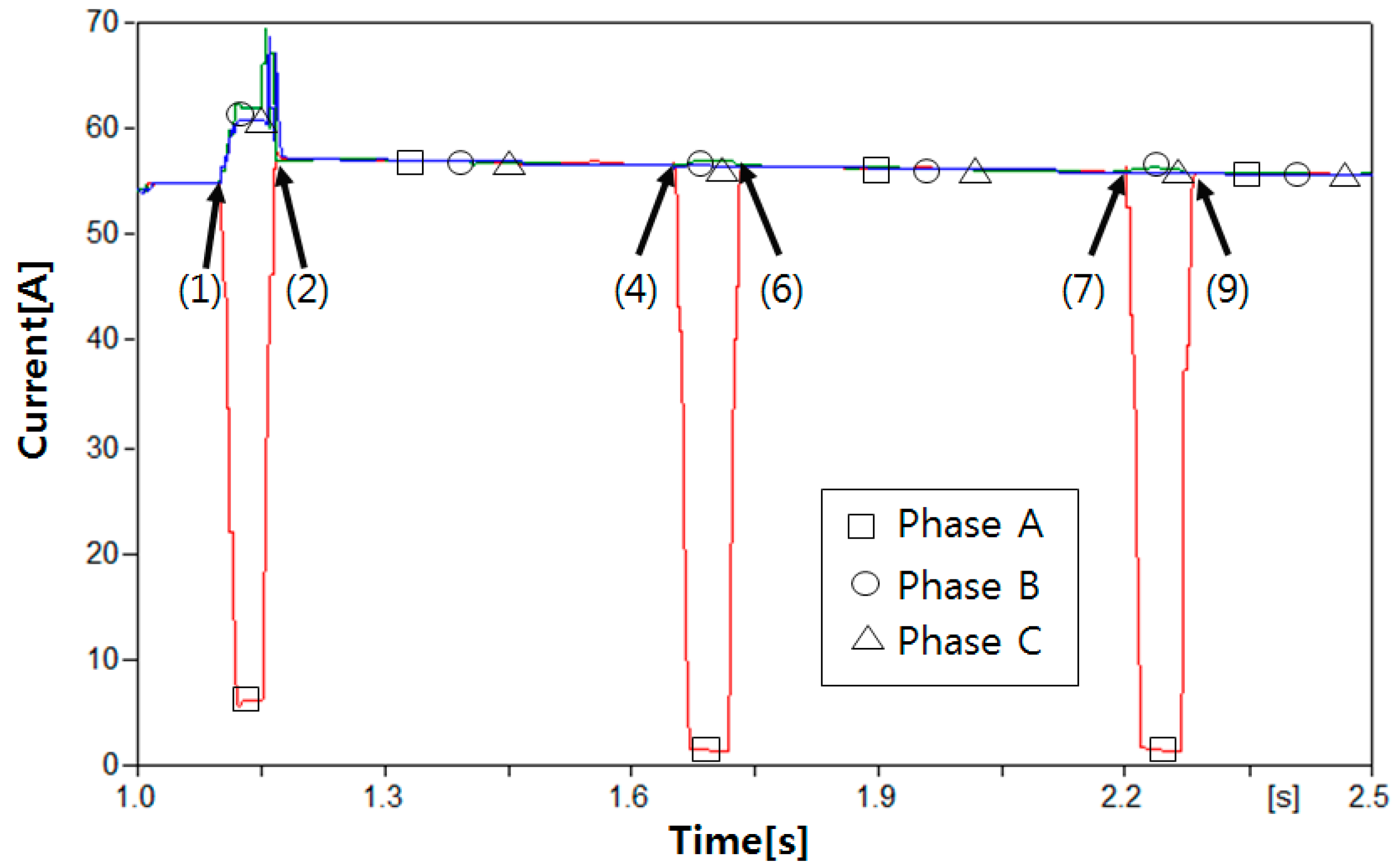
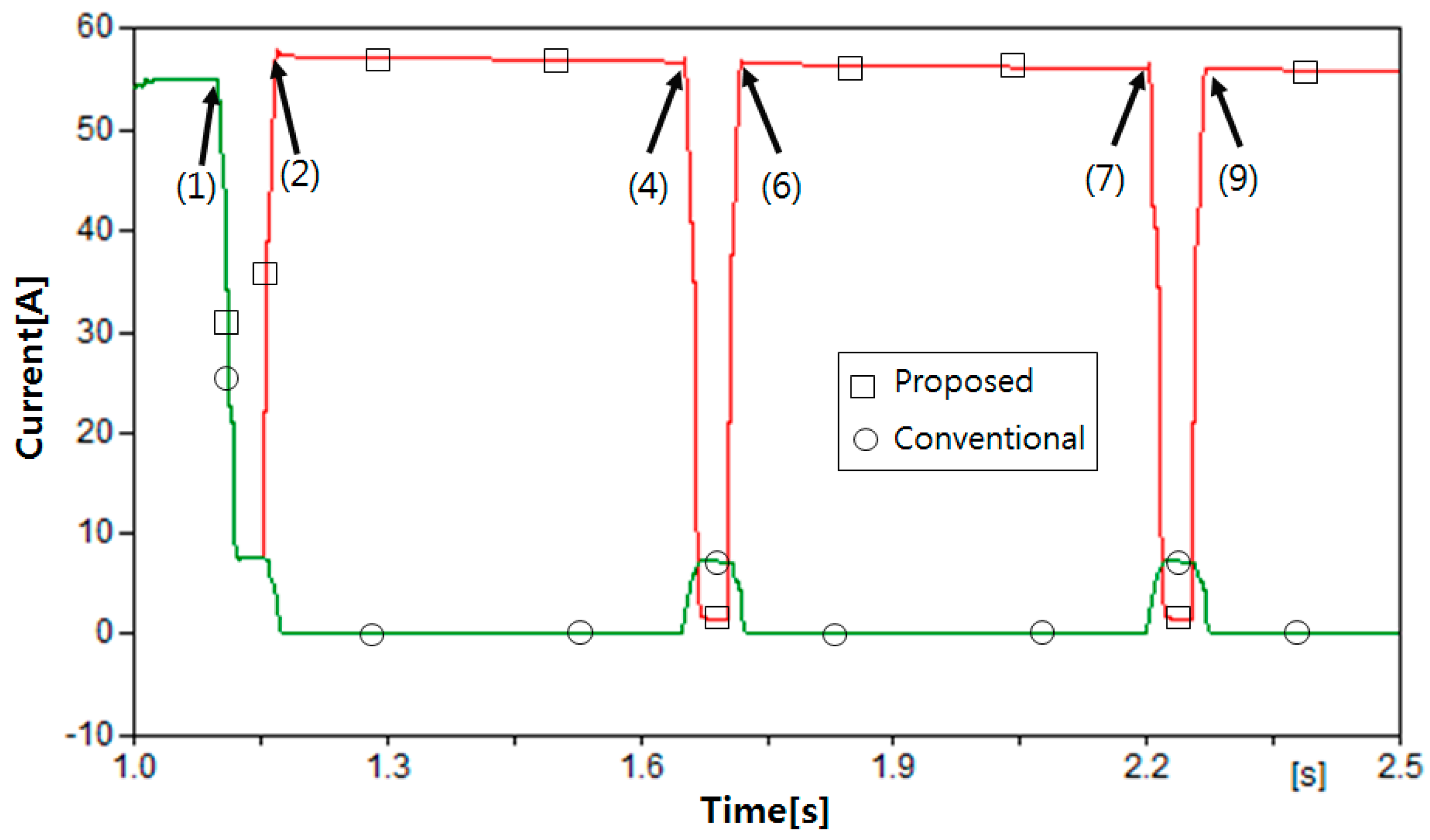
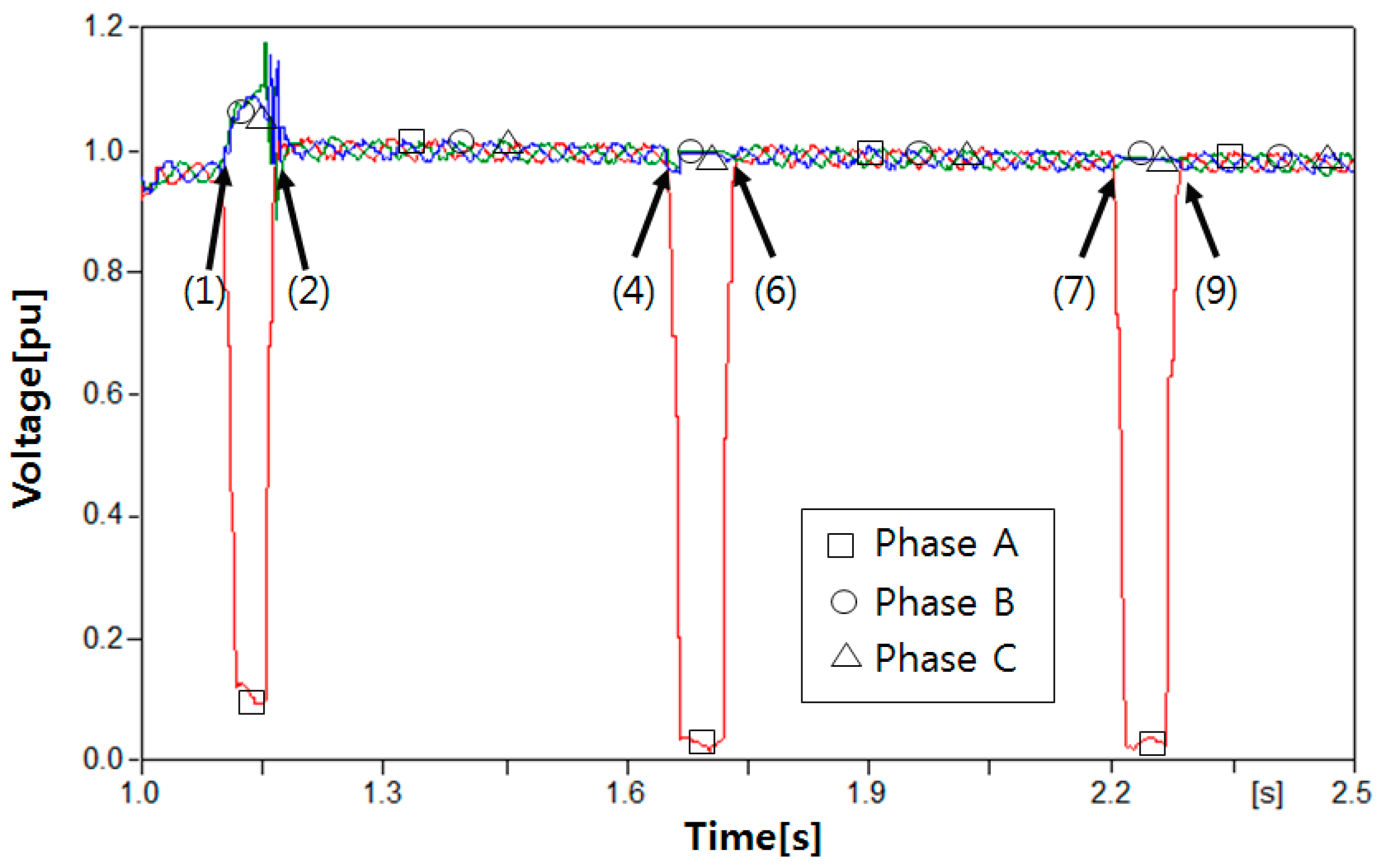
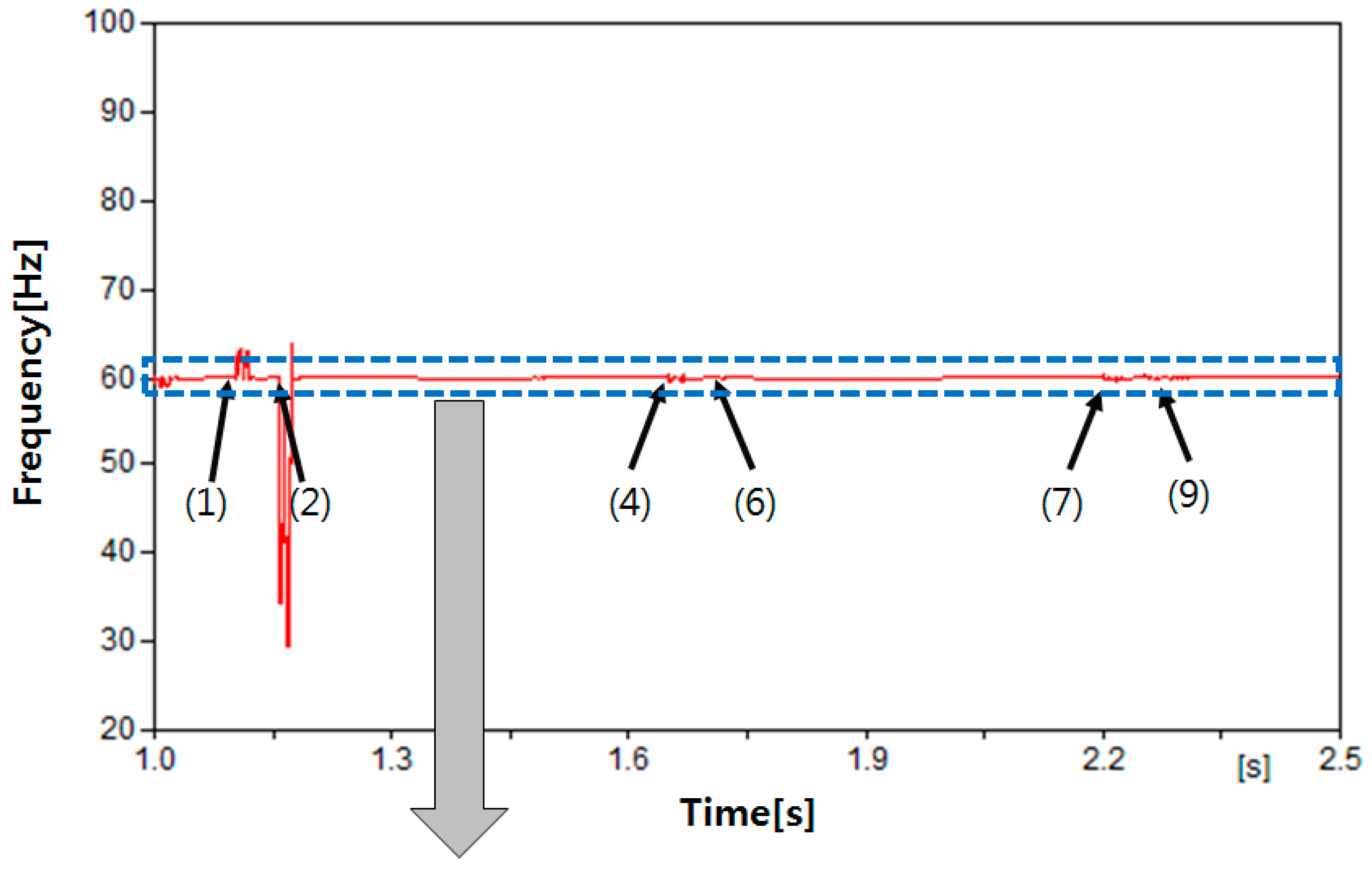

| Case | Fault Occurrence [s] | Fault Clearance Time [s] | Description |
|---|---|---|---|
| Case 1 | 1.1 | 1.266 | Transient fault |
| Case 2 | 1.1 | 1.933 | Transient fault |
| Case 3 | 1.1 | – | Permanent fault |
© 2017 by the author. Licensee MDPI, Basel, Switzerland. This article is an open access article distributed under the terms and conditions of the Creative Commons Attribution (CC BY) license (http://creativecommons.org/licenses/by/4.0/).
Share and Cite
Seo, H.-C. New Configuration and Novel Reclosing Procedure of Distribution System for Utilization of BESS as UPS in Smart Grid. Sustainability 2017, 9, 507. https://doi.org/10.3390/su9040507
Seo H-C. New Configuration and Novel Reclosing Procedure of Distribution System for Utilization of BESS as UPS in Smart Grid. Sustainability. 2017; 9(4):507. https://doi.org/10.3390/su9040507
Chicago/Turabian StyleSeo, Hun-Chul. 2017. "New Configuration and Novel Reclosing Procedure of Distribution System for Utilization of BESS as UPS in Smart Grid" Sustainability 9, no. 4: 507. https://doi.org/10.3390/su9040507





